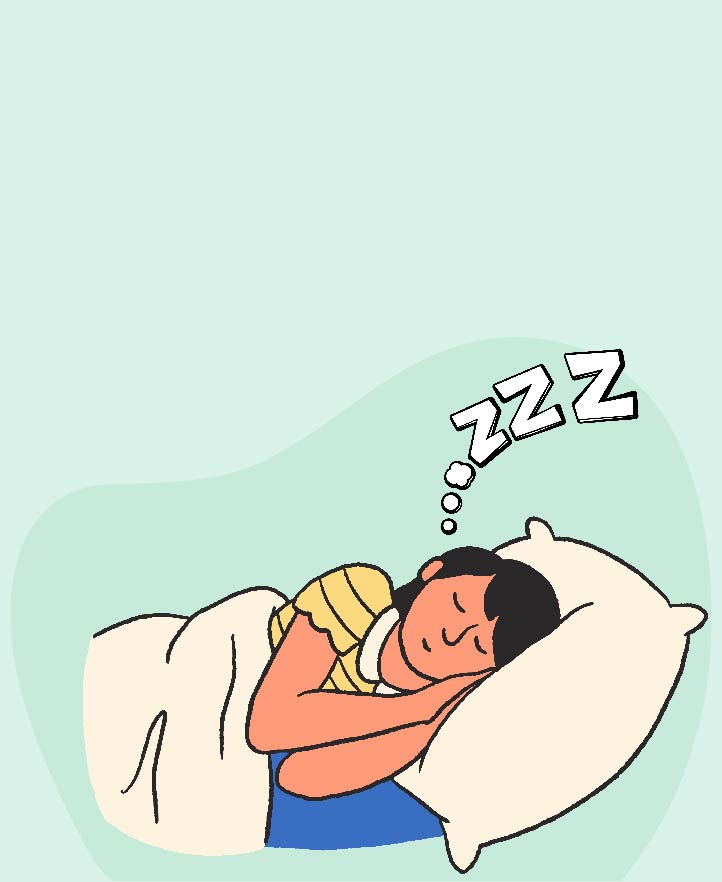

What Is Mouth Taping?
Are you a mouth breather or sleep with your mouth open when sleeping ?Have you ever wondered how to stop mouth breathing while sleeping. Mouth taping is a growing wellness trend that involves placing a piece of tape over the lips to encourage breathing through the nose during sleep. While some studies and experts highlight potential benefits, others advise caution due to possible risks. As interest in sleep health grows, mouth taping continues to gain attention—but it’s best to explore it with proper guidance and understanding. Read on to know how mouth taping is done, along with its possible benefits and drawbacks.
Why Do People Do It?
Here are some of the commonly reported mouth tape advantages:
• Encourages Nasal Breathing
Taping the mouth gently encourages breathing through the nose, which filters, warms, and humidifies air, and boosts nitric oxide production—linked to better blood flow and lower blood pressure.
• Reduces Snoring and Supports Mild Sleep Apnea
Mouth taping might lower snoring and support better breathing in people with mild sleep apnea. However, results are limited and vary between individuals.
• Improves Oral Health
By keeping the mouth closed, mouth-taping reduces dry mouth, bad breath, gum disease, and cavities.
• Enhances Sleep Quality and Daytime Alertness
Users often report deeper sleep with fewer nighttime awakenings, more energy, and better focus—supported by small clinical trials.
• May Reduce Stress and Improve Immunity
Nasal breathing promotes slower, deeper breaths, which can lower stress and support immune function by filtering harmful particles.
Is Mouth Taping Safe?
Mouth taping can be safe for some people, but it’s not recommended for everyone.
Potential risks of mouth taping include:
• Breathing issues
if your nose is blocked (due to allergies, a deviated septum, etc).
• Anxiety or discomfort
during sleep.
• Skin irritation
from the tape causing rashes, or lead to allergic reactions like swelling, redness, or even small burns.
• Safety concerns
in people with sleep apnea, a condition where airways gets blocked during sleep. It can worsen obstructive sleep apnea.
• Choking risks
for people suffering with GERD.
How Do You Do Mouth Taping?
Here’s how to do mouth taping safely and properly:
A) What You’ll Need:
1. Skin-safe tape: Use a skin-friendly, hypoallergenic tape preferrably a micropore surgical tape or a specialty mouth tape designed for sensitive skin. Avoid regular adhesive tapes that can irritate or damage your skin.
2. Clean, dry skin: Ensure no lip balm or lotion is applied beforehand. Clean and dry lips and the surrounding area helps the tape stick better and reduces the risk of irritation.
B) How to Do it: Step-by-Step Instructions
1. Prepare to sleep: Make sure your nasal passages are clear.
2. Apply the tape gently: You have a few safe options depending on comfort:
• Use a short vertical strip (about 1 inch wide). This is beginner friendly. Place it just across the center of your lips, so you can still breathe out the corners if needed.
• Use a longer horizontal strip across the lips to fully seal the mouth. While this is more effective, it can feel restrictive for beginners.
• “H” or “X” shape strips diagonally across the lips in an X-shape to offer some seal without fully closing the mouth.
3. Test for comfort: Before going to sleep, test if you can breathe easily through your nose. If you feel uncomfortable or are having trouble breathing, remove the tape immediately.
4. Remove Strip in the Morning: When you wake up, gently peel off the tape to avoid irritating your skin.
Mouth Taping Alternatives
If you’re looking to improve your sleep or reduce snoring but are unsure about mouth taping for sleep—here are some alternatives:
1. Nasal Strips or Dilators
that help open your nasal passage, making it easier to breathe through your nore while sleeping.
2. Positional Therapy
i.e. sleeping on your side ot with your head slightly elevated can redcue snoring and improve airflow.
3. Following a Good Sleep Hygiene
(a consistent sleep schedule, avoiding heavy meals or alcohol before bedtime).
4. Custom-made oral appliances
to help keep you airway open during sleep.
5. Consult an ENT specialist
to treat underlying nasal issues.
Does Mouth Taping Work?
Mouth taping can work, but its effectiveness depends on why you’re doing it and your individual health conditions. A small study conducted in 2022 showed that mouth taping reduced snoring severity in people with mild obstructive sleep apnea. While there’s still limited large-scale evidence, early results suggests that it can help in certain cases.
Safety Tips
1. Test it while awake for first few minutes to get used to the feeling.
2. Never tape if you’re congested or have nasal blockages.
3. Avoid if you have untreated sleep apnea or serious breathing problems.
4. Remove tape gently in the morning to avoid skin irritation.
Conclusion
When considering any sleep-related treatments or interventions—whether it’s mouth taping or other options—it’s important to prioritise safety and proper diagnosis. While you research more about mouth taping, it’s also a good idea to look into your health insurance plan. Having a good insurance plan can help protect you from unexpected healthcare costs and make accessing professional care easier. Always consult with a healthcare professional before trying new methods to ensure the best outcome for your sleep health and overall well-being.
One of the important components of our overall wellness is also being financially secured. Healthcare emergencies can happen any time, but a good health insurance policy can protect you from such uncertain situations. To know more about Wellness and other health related tips, visit the wellness corner.
Disclaimer: This blog provides general information and discussions about health and related subjects. The information and other content provided in this blog, website or any linked materials are not intended and should not be considered or used as a substitute for medical advice, diagnosis, or treatment. Kindly contact your doctor before starting a new medicine or health regime.
Related Articles
Age and Sleep: Tips for Better Rest and Quality Sleep
Insomnia: What It Is, Causes, Symptoms & Treatment
Yoga Breathing Exercises for a Healthy Lifestyle
Sleep Deprivation: What It Is, Symptoms, Treatment & Stages
The Importance of Sleep to Promote Good Health
Published on July 14, 2025















 Health Insurance
Health Insurance  Travel Insurance
Travel Insurance  Car Insurance
Car Insurance  Cyber Insurance
Cyber Insurance  Critical Illness Insurance
Critical Illness Insurance
 Pet Insurance
Pet Insurance
 Bike/Two Wheeler Insurance
Bike/Two Wheeler Insurance  Home Insurance
Home Insurance  Third Party Vehicle Ins.
Third Party Vehicle Ins.  Tractor Insurance
Tractor Insurance  Goods Carrying Vehicle Ins.
Goods Carrying Vehicle Ins.  Passenger Carrying Vehicle Ins.
Passenger Carrying Vehicle Ins.  Compulsory Personal Accident Insurance
Compulsory Personal Accident Insurance  Travel Insurance
Travel Insurance  Rural
Rural